How to create emergency fund
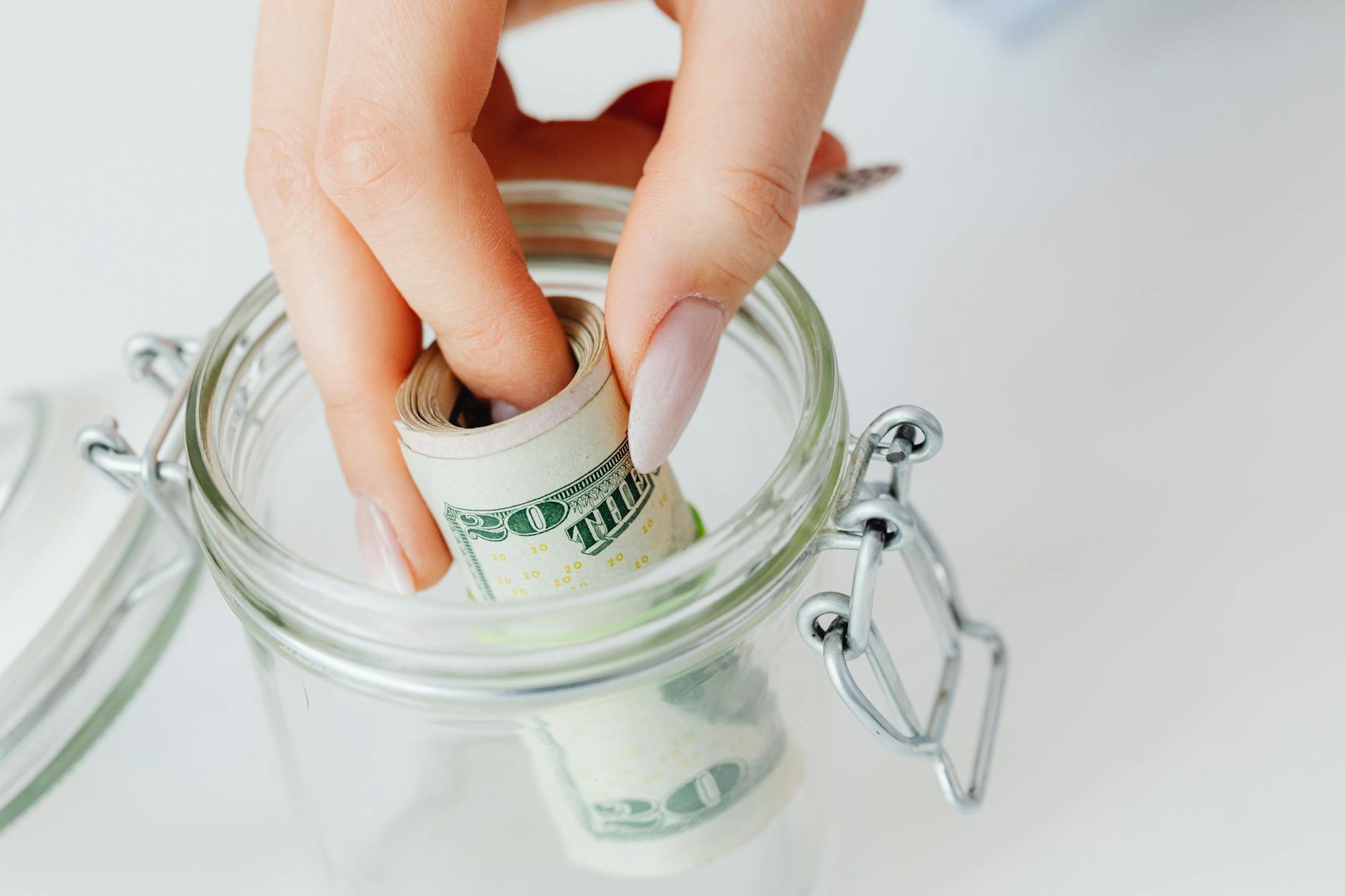
Have you ever found yourself in a financial pinch, wishing you had a safety net to fall back on? 💸 Life's unexpected twists and turns can leave us scrambling for cash when we least expect it. Whether it's a sudden job loss, a medical emergency, or an urgent home repair, these situations can quickly turn into financial nightmares without proper preparation.
Enter the emergency fund – your financial superhero in times of crisis. 🦸♀️ This powerful tool can transform your financial well-being, providing peace of mind and security when you need it most. But here's the million-dollar question: How do you create an emergency fund that truly works for you?
In this blog post, we'll dive deep into the world of emergency funds, guiding you through every step of the process. From understanding what an emergency fund is and assessing your financial situation, to setting realistic goals and choosing the right account, we've got you covered. We'll explore effective strategies to build and maintain your fund, ensuring you're prepared for whatever life throws your way. So, buckle up and get ready to take control of your financial future!
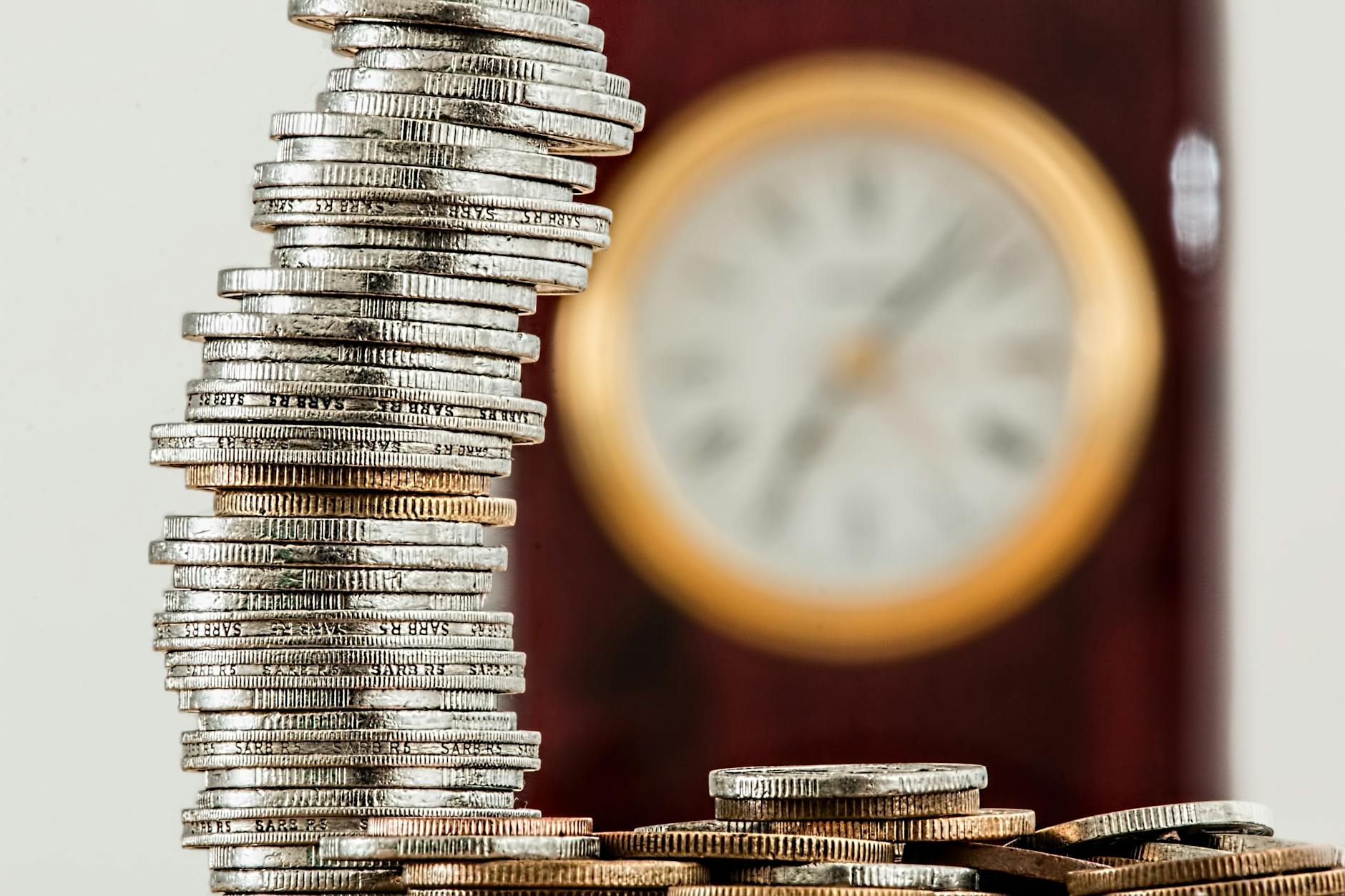
Understanding Emergency Funds
A. Definition and importance
An emergency fund is a dedicated savings account set aside to cover unexpected expenses or financial emergencies. It serves as a financial safety net, providing peace of mind and stability during challenging times. The importance of an emergency fund cannot be overstated, as it plays a crucial role in maintaining financial health and preventing long-term financial setbacks.
Emergency funds are designed to cover unforeseen circumstances such as:
-
Job loss or unexpected unemployment
-
Medical emergencies or sudden health issues
-
Major home or car repairs
-
Unexpected travel expenses
-
Unforeseen legal fees
By having a readily accessible pool of money, you can avoid relying on high-interest credit cards or loans when faced with unexpected expenses. This financial buffer helps prevent debt accumulation and allows you to maintain your regular financial obligations without disruption.
B. Recommended amount to save
The recommended amount to save in an emergency fund can vary depending on individual circumstances, but financial experts generally suggest the following guidelines:
-
3-6 months of living expenses: This is the most common recommendation for individuals with stable income and relatively low financial risk.
-
6-12 months of living expenses: This higher range is recommended for those with variable income, self-employed individuals, or those in industries with higher job insecurity.
To determine the right amount for your emergency fund, consider the following factors:
-
Your monthly expenses
-
Job stability and industry outlook
-
Number of dependents
-
Health conditions and potential medical expenses
-
Existing insurance coverage
It's important to note that building an emergency fund is a gradual process. Start with a smaller, more achievable goal, such as saving $1,000, and then work your way up to the recommended 3-6 months of expenses.
Here's a simple table to help you visualize different emergency fund targets based on monthly expenses:
| Monthly Expenses | 3-Month Fund | 6-Month Fund | 12-Month Fund |
|---|---|---|---|
| $2,000 | $6,000 | $12,000 | $24,000 |
| $3,000 | $9,000 | $18,000 | $36,000 |
| $4,000 | $12,000 | $24,000 | $48,000 |
| $5,000 | $15,000 | $30,000 | $60,000 |
Remember, these are general guidelines, and your specific emergency fund target should be tailored to your unique financial situation and risk tolerance.
C. Benefits of having an emergency fund
Having a well-established emergency fund offers numerous benefits that contribute to overall financial well-being and peace of mind. Let's explore some of the key advantages:
-
Financial security and peace of mind
An emergency fund provides a sense of security, knowing that you have a financial cushion to fall back on during unexpected events. This peace of mind can reduce stress and anxiety related to potential financial challenges. -
Avoiding high-interest debt
With an emergency fund in place, you can avoid relying on credit cards or high-interest loans to cover unexpected expenses. This helps prevent the accumulation of debt and saves money on interest charges in the long run. -
Maintaining financial stability
During periods of income loss or unexpected expenses, an emergency fund allows you to maintain your regular financial obligations, such as mortgage payments, utilities, and groceries, without disrupting your lifestyle or damaging your credit score. -
Flexibility in career decisions
Having a robust emergency fund provides the flexibility to make career changes or pursue new opportunities without the immediate pressure of financial constraints. It can give you the confidence to leave a job that no longer aligns with your goals or to start your own business. -
Protection against market volatility
An emergency fund kept in a liquid savings account provides stability during market downturns. This allows you to avoid selling investments at inopportune times to cover unexpected expenses, potentially preserving long-term wealth. -
Improved financial decision-making
With an emergency fund in place, you're less likely to make impulsive or desperate financial decisions when faced with unexpected expenses. This allows for more rational and strategic financial planning. -
Reduced insurance costs
In some cases, having a substantial emergency fund may allow you to opt for higher deductibles on insurance policies, potentially lowering your premiums while still maintaining adequate coverage. -
Opportunity to capitalize on unexpected opportunities
While primarily designed for emergencies, a well-funded emergency account can also provide the means to take advantage of unexpected opportunities, such as a great deal on a necessary purchase or a time-sensitive investment opportunity. -
Enhanced relationship stability
Financial stress is a common source of relationship tension. An emergency fund can help reduce financial conflicts between partners or family members by providing a buffer against unexpected financial challenges. -
Improved overall financial health
Building and maintaining an emergency fund encourages disciplined saving habits and financial responsibility. These skills often translate to other areas of personal finance, leading to improved overall financial health and goal achievement.
By understanding the definition, importance, recommended savings targets, and benefits of an emergency fund, you're taking the first crucial step towards financial preparedness. An emergency fund serves as the foundation of a solid financial plan, providing stability and security in an unpredictable world.
Now that we have covered the fundamental aspects of emergency funds, let's move on to assessing your financial situation, which will help you determine the right emergency fund size for your specific needs and circumstances.

Assessing Your Financial Situation
Now that we understand what an emergency fund is and why it's crucial, let's dive into assessing your financial situation. This step is essential for creating a robust emergency fund that truly meets your needs.
A. Calculating Monthly Expenses
To build an effective emergency fund, you first need to have a clear picture of your monthly expenses. This involves a thorough examination of your spending habits and financial obligations.
-
Fixed Expenses: Start by listing all your fixed monthly costs. These typically include:
-
Rent or mortgage payments
-
Utility bills (electricity, water, gas)
-
Insurance premiums (health, auto, home)
-
Loan payments (student loans, car loans)
-
Phone and internet bills
-
-
Variable Expenses: Next, calculate your average monthly spending on variable costs:
-
Groceries
-
Transportation (fuel, public transit fares)
-
Entertainment and dining out
-
Personal care (haircuts, gym memberships)
-
Clothing and household items
-
-
Discretionary Spending: Don't forget to account for occasional expenses:
-
Gifts
-
Travel
-
Home maintenance
-
Vehicle maintenance
-
To get an accurate picture, review your bank statements and credit card bills for the past 3-6 months. This will help you identify any spending patterns or areas where you might be overspending.
Monthly Expense Calculator
| Expense Category | Amount ($) |
|---|---|
| Fixed Expenses | |
| Variable Expenses | |
| Discretionary | |
| Total |
Use this simple table to sum up your expenses. The total will give you a clear idea of how much you need to cover your monthly costs.
B. Identifying Potential Emergencies
After calculating your monthly expenses, the next step is to identify potential emergencies you might face. This exercise helps you understand the types of situations your emergency fund should be prepared to cover.
Common potential emergencies include:
-
Job loss or reduction in income
-
Major medical expenses not covered by insurance
-
Unexpected home repairs (e.g., roof damage, plumbing issues)
-
Car repairs or replacement
-
Unplanned travel for family emergencies
-
Legal expenses
Consider your personal circumstances when identifying potential emergencies. For example, if you live in an area prone to natural disasters, you might need to factor in potential evacuation costs or property damage.
It's also important to differentiate between true emergencies and foreseeable expenses. For instance, annual property taxes or routine car maintenance should be part of your regular budget, not covered by your emergency fund.
C. Evaluating Current Savings
The final step in assessing your financial situation is to evaluate your current savings. This will help you understand how close or far you are from your emergency fund goal.
-
Liquid Assets: Start by calculating your readily available cash. This includes:
-
Checking account balances
-
Savings account balances
-
Money market account funds
-
Cash on hand
-
-
Short-term Investments: Consider any investments that can be quickly converted to cash without significant penalties:
-
Certificates of Deposit (CDs)
-
Treasury bills
-
Certain mutual funds
-
-
Credit Lines: While not ideal for emergencies, it's worth noting any available credit:
-
Credit card limits
-
Home equity lines of credit
-
Personal lines of credit
-
Current Savings Evaluation Table
| Savings Category | Amount ($) | Accessibility |
|---|---|---|
| Liquid Assets | Immediate | |
| Short-term Investments | 1-7 days | |
| Credit Lines | Immediate | |
| Total |
This table will help you visualize your current financial cushion. Remember, your emergency fund should ideally consist of liquid assets that can be accessed quickly and without penalties.
Once you've completed these three steps - calculating monthly expenses, identifying potential emergencies, and evaluating current savings - you'll have a comprehensive view of your financial situation. This assessment serves as the foundation for setting realistic savings goals and developing strategies to build your emergency fund.
By understanding your monthly expenses, you can determine how many months of expenses your emergency fund should cover. Identifying potential emergencies helps you set a target amount that will genuinely provide a safety net. And evaluating your current savings shows you the gap between where you are and where you need to be.
With this information in hand, you're now ready to move on to the next crucial step: setting realistic savings goals for your emergency fund. This process will involve balancing your current financial obligations with your long-term financial security needs.
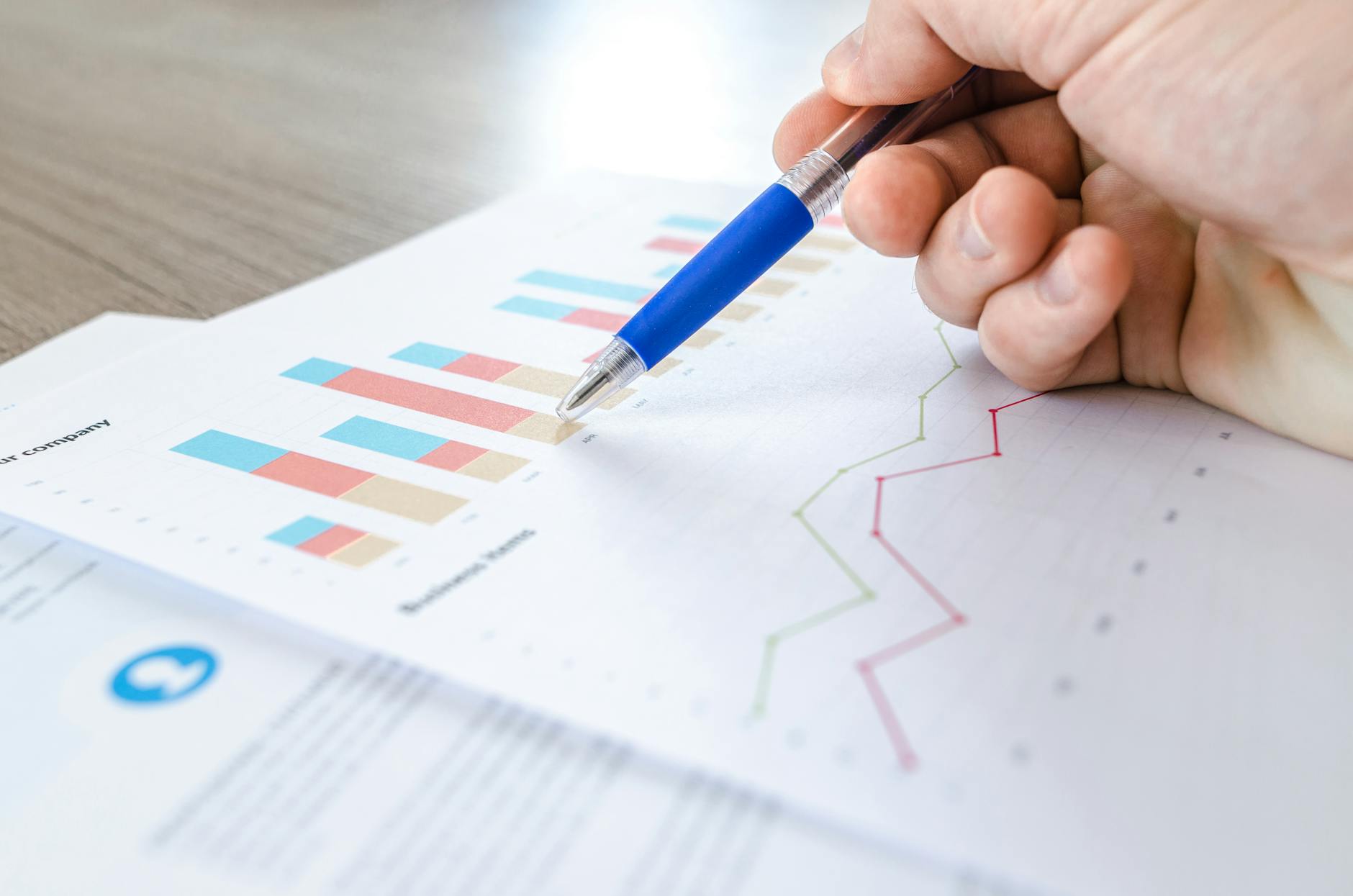
Setting Realistic Savings Goals
Now that you've assessed your financial situation, it's time to set realistic savings goals for your emergency fund. This crucial step will help you stay motivated and track your progress as you build your financial safety net.
A. Determining Your Target Amount
The first step in setting realistic savings goals is to determine the target amount for your emergency fund. While the ideal emergency fund size can vary depending on individual circumstances, financial experts generally recommend saving 3-6 months' worth of living expenses.
To calculate your target amount:
-
List all your essential monthly expenses
-
Multiply the total by 3 to 6, depending on your risk tolerance and job security
-
Consider factors like dependents, health conditions, and industry volatility
Here's an example of how to calculate your target emergency fund amount:
| Expense Category | Monthly Cost |
|---|---|
| Rent/Mortgage | $1,500 |
| Utilities | $200 |
| Groceries | $400 |
| Transportation | $300 |
| Insurance | $200 |
| Debt Payments | $400 |
| Total | $3,000 |
In this example, if you aim for a 4-month emergency fund, your target amount would be $12,000 ($3,000 x 4).
Remember, your emergency fund is meant to cover unexpected expenses and provide a financial cushion during challenging times. It's essential to be realistic about your needs and adjust your target amount accordingly.
B. Creating a Timeline
Once you've determined your target amount, the next step is to create a timeline for reaching your goal. A well-planned timeline helps you stay focused and motivated throughout the saving process.
Consider the following factors when creating your timeline:
-
Current savings rate
-
Income stability
-
Existing debts and financial obligations
-
Upcoming major expenses or life changes
To create a realistic timeline:
-
Assess how much you can comfortably save each month
-
Divide your target amount by your monthly savings
-
Adjust the timeline based on your financial situation and goals
For example, if your target emergency fund is $12,000 and you can save $500 per month, it would take you 24 months (2 years) to reach your goal. However, you may want to accelerate your savings by finding additional sources of income or cutting expenses.
Use this simple formula to calculate your timeline:
Timeline (in months) = Target Amount / Monthly Savings
Remember that building an emergency fund is a marathon, not a sprint. Be patient with yourself and celebrate small milestones along the way.
C. Breaking Down Goals into Manageable Steps
To make your emergency fund goal less overwhelming and more achievable, break it down into smaller, manageable steps. This approach helps you maintain momentum and track your progress more effectively.
Here are some strategies to break down your emergency fund goal:
-
Set monthly savings targets
-
Divide your annual savings goal by 12 to determine your monthly target
-
Track your progress using a spreadsheet or budgeting app
-
-
Create mini-milestones
-
Celebrate reaching 25%, 50%, and 75% of your target amount
-
Reward yourself (within reason) for hitting these milestones
-
-
Use the "pay yourself first" method
-
Treat your emergency fund contribution as a non-negotiable expense
-
Set up automatic transfers to your emergency fund account on payday
-
-
Implement a "savings ladder" approach
-
Start with a small, achievable goal (e.g., $500)
-
Gradually increase your target as you build momentum
-
-
Challenge yourself with short-term savings sprints
-
Set a goal to save a specific amount in 30 days
-
Find creative ways to cut expenses or increase income during this period
-
Here's an example of how to break down a $12,000 emergency fund goal into manageable steps:
| Milestone | Target Amount | Estimated Timeline |
|---|---|---|
| Step 1 | $1,000 | 2 months |
| Step 2 | $3,000 | 4 months |
| Step 3 | $6,000 | 6 months |
| Step 4 | $9,000 | 6 months |
| Step 5 | $12,000 | 6 months |
By breaking down your goal into these steps, you create a clear roadmap for building your emergency fund. This approach allows you to celebrate small wins along the way, keeping you motivated and on track.
Remember to regularly review and adjust your goals as your financial situation changes. Life events, income fluctuations, or unexpected expenses may require you to reassess your timeline or target amount.
As you work towards building your emergency fund, keep in mind that consistency is key. Even small, regular contributions can add up over time. If you find yourself struggling to meet your savings goals, don't be discouraged. Instead, reassess your budget, look for additional ways to cut expenses, or explore opportunities to increase your income.
By setting realistic savings goals, creating a timeline, and breaking down your objectives into manageable steps, you're laying a solid foundation for financial security. With your goals in place, you're now ready to explore the next crucial step in building your emergency fund: choosing the right account to store your savings.

Choosing the Right Account
Now that you've assessed your financial situation and set realistic savings goals for your emergency fund, it's crucial to choose the right account to store your hard-earned money. The account you select will play a significant role in how quickly your emergency fund grows and how easily you can access it when needed. Let's explore the best options for your emergency fund and consider important factors like accessibility and liquidity.
A. High-yield savings accounts
High-yield savings accounts are often the go-to choice for emergency funds, and for good reason. These accounts offer several advantages that make them ideal for storing your emergency savings:
-
Higher interest rates: As the name suggests, high-yield savings accounts typically offer interest rates significantly higher than traditional savings accounts. This means your money will grow faster over time, helping you reach your emergency fund goals more quickly.
-
FDIC insurance: Most high-yield savings accounts are FDIC-insured, meaning your money is protected up to $250,000 per depositor, per bank.
-
Easy access: While not as immediate as a checking account, high-yield savings accounts usually allow for quick and easy transfers to your primary checking account when needed.
-
Low or no fees: Many high-yield savings accounts have no monthly maintenance fees or minimum balance requirements, allowing you to keep more of your money.
-
Online management: Most high-yield savings accounts are offered by online banks, providing convenient access to your funds through mobile apps and online banking platforms.
When considering a high-yield savings account for your emergency fund, compare the following factors:
| Factor | What to Look For |
|---|---|
| Interest Rate | The higher, the better |
| Minimum Balance | Lower or no minimum balance requirements |
| Fees | No monthly maintenance fees |
| Withdrawal Limits | Higher monthly withdrawal limits |
| FDIC Insurance | Ensure the account is FDIC-insured |
| Online/Mobile Access | User-friendly platforms for easy management |
B. Money market accounts
Money market accounts are another excellent option for your emergency fund. These accounts combine features of both savings and checking accounts, offering some unique benefits:
-
Competitive interest rates: Money market accounts often offer interest rates comparable to or even higher than high-yield savings accounts, helping your emergency fund grow faster.
-
Check-writing privileges: Unlike most savings accounts, many money market accounts allow you to write checks directly from the account, providing easier access to your funds in emergencies.
-
Debit card access: Some money market accounts come with a debit card, allowing for quick and easy withdrawals when needed.
-
FDIC insurance: Like high-yield savings accounts, money market accounts at banks are typically FDIC-insured up to $250,000.
-
Tiered interest rates: Some money market accounts offer tiered interest rates, meaning you can earn higher rates as your balance grows, incentivizing you to save more.
However, there are a few potential drawbacks to consider:
-
Higher minimum balance requirements: Money market accounts often require a higher initial deposit and minimum balance compared to savings accounts.
-
Limited transactions: While more flexible than savings accounts, money market accounts may still have monthly transaction limits.
-
Potential fees: Some money market accounts charge monthly maintenance fees, especially if you don't maintain a minimum balance.
When evaluating money market accounts for your emergency fund, consider the following:
-
Interest rates and how they compare to high-yield savings accounts
-
Minimum balance requirements and any associated fees
-
Check-writing and debit card features
-
Transaction limits and withdrawal restrictions
-
FDIC insurance coverage
C. Accessibility and liquidity considerations
When choosing an account for your emergency fund, accessibility and liquidity are crucial factors to consider. After all, the purpose of an emergency fund is to have quick access to cash when unexpected expenses arise. Here are some key points to keep in mind:
-
Withdrawal speed: Consider how quickly you can access your money in case of an emergency. Some accounts may require a few business days for transfers, while others offer same-day or next-day access.
-
Transfer limits: Check if there are any restrictions on the amount you can withdraw or transfer at once. Ensure these limits align with your potential emergency needs.
-
ATM access: If immediate cash access is important to you, look for accounts that offer ATM cards or reimburse ATM fees.
-
Online and mobile banking: Opt for accounts with user-friendly online and mobile platforms, allowing you to manage your emergency fund and initiate transfers easily.
-
Linked accounts: Consider how easily you can link your emergency fund account to your primary checking account for quick transfers.
-
Penalties for withdrawals: Avoid accounts that impose penalties or fees for withdrawals, as this can hinder your ability to access funds in emergencies.
-
Account stability: Choose an account where the interest rate is likely to remain competitive over time, reducing the need to switch accounts frequently.
To help you weigh your options, consider creating a prioritized list of features based on your specific needs:
-
Highest priority: Quick access to funds
-
Second priority: Competitive interest rates
-
Third priority: Low or no fees
-
Fourth priority: User-friendly online/mobile platform
-
Fifth priority: Additional features (e.g., check-writing, debit card)
By carefully considering these factors, you can choose an account that not only helps your emergency fund grow but also ensures you can access your money quickly when you need it most.
As we move forward, we'll explore effective strategies to build your emergency fund, helping you reach your savings goals faster and strengthen your financial security.
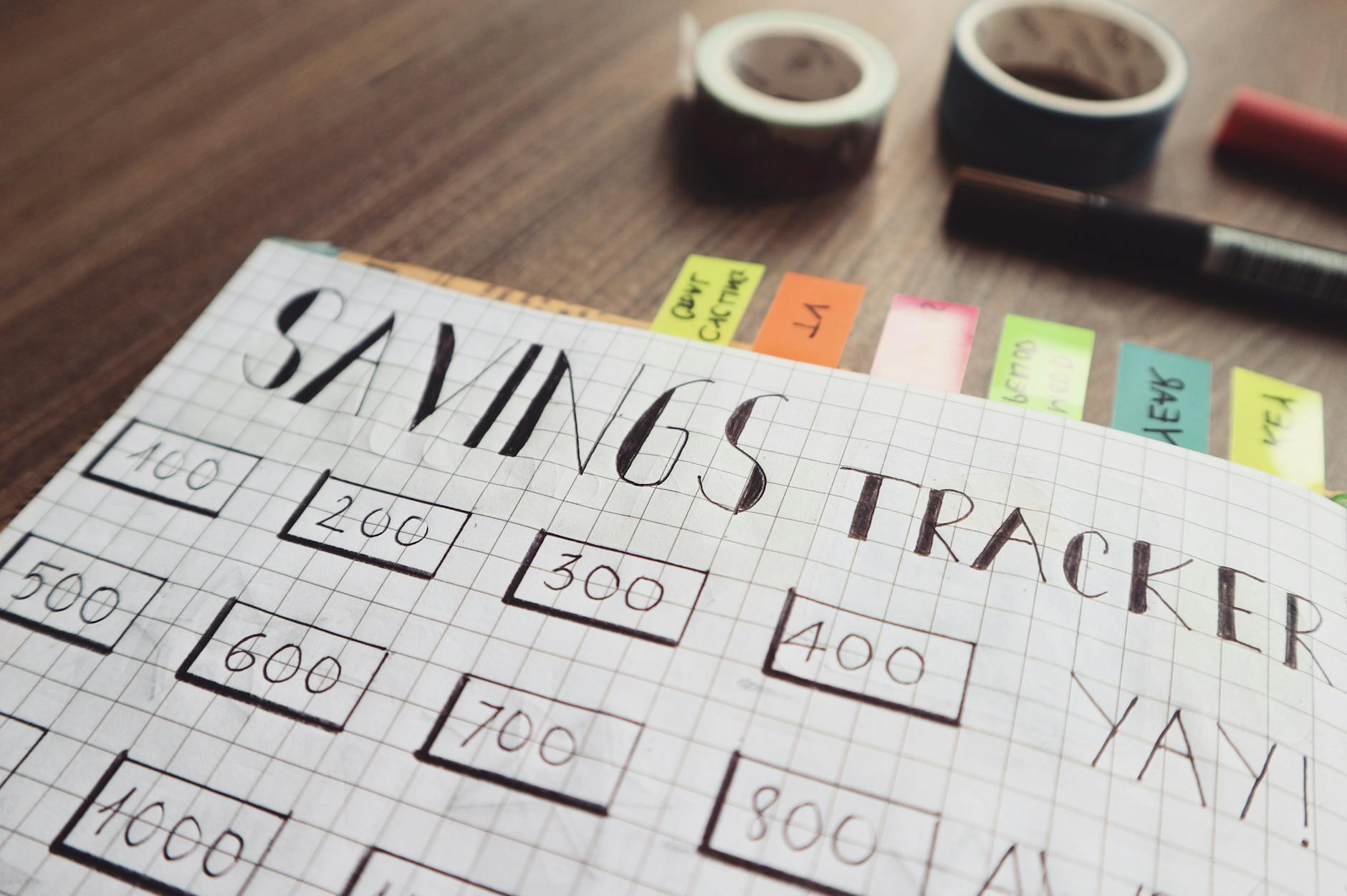
Strategies to Build Your Emergency Fund
Now that you've assessed your financial situation and set realistic savings goals, it's time to explore effective strategies to build your emergency fund. By implementing these proven methods, you'll be well on your way to achieving financial security and peace of mind.
A. Cutting Unnecessary Expenses
One of the most effective ways to build your emergency fund is by identifying and eliminating unnecessary expenses. This process requires a careful examination of your spending habits and a willingness to make some sacrifices for long-term financial stability.
Conduct a Spending Audit
Start by reviewing your bank statements and credit card bills from the past three months. Categorize your expenses and identify areas where you can cut back. Here's a table to help you organize your findings:
| Expense Category | Monthly Average | Potential Savings |
|---|---|---|
| Housing | $X,XXX | $XXX |
| Transportation | $XXX | $XX |
| Food | $XXX | $XX |
| Entertainment | $XXX | $XX |
| Subscriptions | $XX | $XX |
| Miscellaneous | $XXX | $XX |
Implement Cost-Cutting Measures
Once you've identified potential areas for savings, consider implementing the following cost-cutting measures:
-
Negotiate bills: Contact your service providers (e.g., cable, internet, phone) and ask for better rates or promotions.
-
Reduce dining out: Cook meals at home and limit restaurant visits to special occasions.
-
Cancel unused subscriptions: Review your recurring payments and cancel services you rarely use.
-
Use energy-saving techniques: Lower your utility bills by adopting energy-efficient practices at home.
-
Shop smarter: Use coupons, compare prices, and buy generic brands when possible.
By consistently applying these strategies, you can redirect the saved money towards your emergency fund, accelerating its growth.
B. Increasing Income Through Side Hustles
While cutting expenses is crucial, increasing your income can significantly boost your ability to build an emergency fund. Consider taking on side hustles or part-time work to supplement your primary income.
Popular Side Hustle Options
-
Freelancing: Offer your skills in writing, graphic design, programming, or virtual assistance on platforms like Upwork or Fiverr.
-
Rideshare or food delivery: Drive for services like Uber, Lyft, or DoorDash in your spare time.
-
Online tutoring: Share your expertise in subjects you excel at through platforms like VIPKid or Chegg.
-
Pet sitting or dog walking: Use apps like Rover or Wag to connect with pet owners in your area.
-
Sell items online: Declutter your home and sell unwanted items on eBay, Facebook Marketplace, or Craigslist.
Maximizing Side Hustle Income
To make the most of your side hustle efforts:
-
Set clear goals: Determine how much extra income you need to reach your emergency fund target.
-
Manage your time effectively: Balance your side hustle with your primary job and personal life.
-
Reinvest earnings: Dedicate a significant portion of your side income directly to your emergency fund.
-
Track your progress: Monitor your earnings and adjust your strategy as needed to meet your goals.
C. Automating Savings Contributions
Automating your savings is a powerful strategy to ensure consistent contributions to your emergency fund. By removing the need for manual transfers, you reduce the temptation to spend the money elsewhere and make saving a habit.
Steps to Automate Your Savings
-
Set up a separate savings account: Choose a high-yield savings account specifically for your emergency fund.
-
Determine your contribution amount: Decide how much you can realistically save each month based on your budget and income.
-
Schedule automatic transfers: Set up recurring transfers from your checking account to your emergency fund savings account.
-
Align transfers with pay dates: Schedule the transfers to occur shortly after you receive your paycheck to ensure the funds are available.
-
Start small and increase gradually: Begin with a comfortable amount and increase it over time as you adjust your budget.
Benefits of Automation
-
Consistency: Regular contributions help build your emergency fund steadily over time.
-
Reduced temptation: Automated transfers minimize the chance of spending the money impulsively.
-
Psychological ease: Once set up, saving becomes effortless and less stressful.
-
Compound growth: Consistent savings allow your emergency fund to benefit from compound interest over time.
D. Allocating Windfalls and Tax Refunds
Unexpected windfalls and annual tax refunds present excellent opportunities to boost your emergency fund quickly. By prioritizing these lump sums for your financial security, you can make significant progress towards your savings goals.
Types of Windfalls to Consider
-
Tax refunds
-
Work bonuses
-
Inheritance
-
Gifts
-
Lottery winnings (no matter how small)
-
Rebates or cashback rewards
Strategies for Allocating Windfalls
-
Prioritize your emergency fund: Commit to allocating a significant portion (ideally 50% or more) of any windfall to your emergency savings.
-
Create a windfall allocation plan: Decide in advance how you'll distribute unexpected money between savings, debt repayment, and discretionary spending.
-
Resist lifestyle inflation: Avoid using windfalls for unnecessary purchases or upgrades that increase your regular expenses.
-
Consider tax implications: Be aware of any tax obligations associated with windfalls, especially for larger amounts like inheritances.
Maximizing Tax Refunds
If you typically receive a tax refund, consider these strategies:
-
Adjust your withholdings: Fine-tune your tax withholdings to receive more money throughout the year instead of a large refund.
-
Set up direct deposit: Have your tax refund deposited directly into your emergency fund savings account.
-
Use tax preparation software: Ensure you're claiming all eligible deductions and credits to maximize your refund.
By implementing these strategies to build your emergency fund, you'll be taking significant steps towards financial preparedness and security. Remember that consistency is key, and even small contributions can add up over time. As you progress, you'll gain confidence in your ability to handle unexpected expenses and navigate financial challenges with greater ease.
Next, we'll explore how to maintain and grow your emergency fund once you've successfully built it up to your target amount.
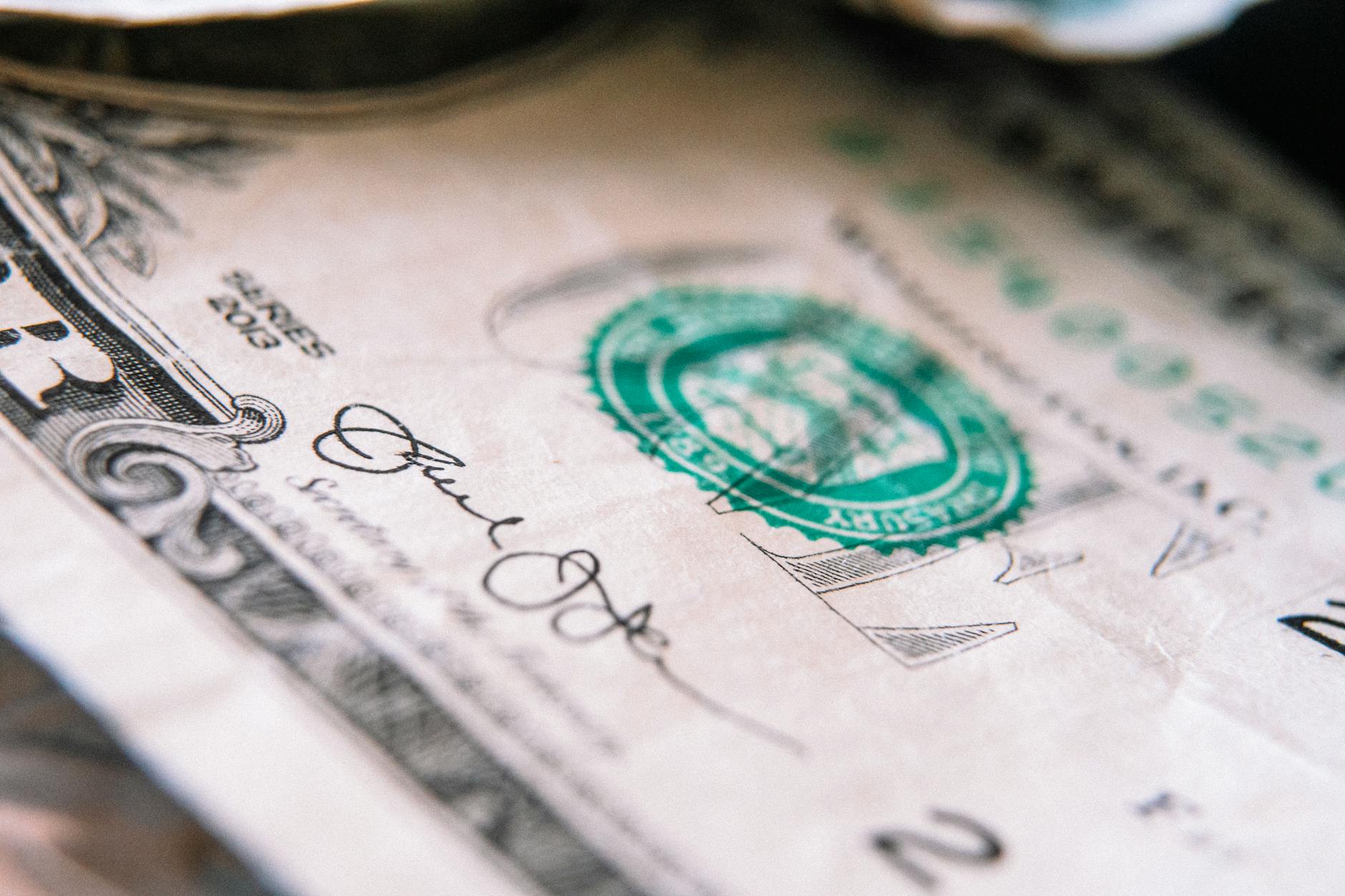
Maintaining and Growing Your Emergency Fund
Now that you've established your emergency fund, it's crucial to focus on maintaining and growing it over time. This ongoing process ensures your financial safety net remains strong and adapts to your changing circumstances. Let's explore effective strategies for keeping your emergency fund healthy and robust.
Regular Review and Adjustment
Regularly reviewing and adjusting your emergency fund is essential to ensure it remains aligned with your current financial situation and future needs. Here's how to approach this:
-
Quarterly Check-ins: Set aside time every three months to evaluate your emergency fund. This frequency allows you to stay on top of changes without becoming overly obsessive about your savings.
-
Life Changes Assessment: Consider any significant life events that may have occurred since your last review. These could include:
-
Changes in income
-
New dependents
-
Relocation
-
Health status changes
-
Job security shifts
-
-
Expense Evaluation: Reassess your monthly expenses and adjust your emergency fund target if necessary. Your fund should typically cover 3-6 months of expenses, but this may vary based on your personal circumstances.
-
Inflation Consideration: Factor in the impact of inflation on your savings. As the cost of living increases, your emergency fund should grow proportionally to maintain its purchasing power.
-
Rebalancing: If your fund has grown beyond your target, consider reallocating excess funds to other financial goals, such as retirement savings or investments.
Here's a simple table to help you track your emergency fund adjustments:
| Review Date | Current Fund Balance | Target Amount | Adjustment Needed | Action Taken |
|---|---|---|---|---|
| MM/DD/YYYY | $X,XXX | $X,XXX | +/- $X,XXX | [Notes] |
| MM/DD/YYYY | $X,XXX | $X,XXX | +/- $X,XXX | [Notes] |
| MM/DD/YYYY | $X,XXX | $X,XXX | +/- $X,XXX | [Notes] |
Resisting Temptation to Use for Non-Emergencies
One of the biggest challenges in maintaining an emergency fund is resisting the urge to dip into it for non-emergency expenses. Here are strategies to help you stay disciplined:
-
Clear Definition of Emergencies: Establish a clear set of criteria for what constitutes a genuine emergency. This might include:
-
Job loss
-
Unexpected medical expenses
-
Essential home or car repairs
-
Unplanned travel for family emergencies
-
-
Separate Savings Accounts: Create distinct savings accounts for different purposes. This physical separation can help reinforce mental boundaries between your emergency fund and other savings goals.
-
Visualization Techniques: Imagine worst-case scenarios where you'd genuinely need your emergency fund. This can help reinforce its importance and deter casual withdrawals.
-
Accountability Partner: Share your emergency fund goals with a trusted friend or family member who can help keep you accountable.
-
Cooling-off Period: Implement a personal rule to wait 24-48 hours before making any withdrawals from your emergency fund. This can help prevent impulsive decisions.
-
Alternative Funding Sources: Develop a list of alternative ways to fund non-emergency expenses, such as:
-
Cutting discretionary spending
-
Selling unused items
-
Taking on temporary side gigs
-
Negotiating payment plans for large expenses
-
By consistently applying these strategies, you'll be better equipped to preserve your emergency fund for true emergencies, ensuring it's there when you really need it.
Gradually Increasing Savings Rate
As you become more comfortable with maintaining your emergency fund, consider gradually increasing your savings rate. This approach can help you build a more robust financial buffer and potentially reach your target faster. Here's how to go about it:
-
Incremental Increases: Start by increasing your savings rate by small, manageable amounts. For example, boost your monthly contribution by 1% every quarter.
-
Automate Savings Increases: Use technology to your advantage. Many banks offer features that allow you to automatically increase your savings contributions over time.
-
Allocate Windfalls: Commit to putting a portion of any unexpected income (bonuses, tax refunds, gifts) directly into your emergency fund.
-
Expense Reduction Challenge: Regularly challenge yourself to find new ways to reduce expenses and redirect the savings to your emergency fund. This could involve:
-
Negotiating better rates on recurring bills
-
Finding more cost-effective alternatives for regular purchases
-
Identifying and eliminating unnecessary subscriptions
-
-
Income Diversification: Explore opportunities to increase your income through side hustles or passive income streams, dedicating a portion of this additional income to your emergency fund.
-
Savings Ladders: As your fund grows, consider creating a CD ladder or high-yield savings account strategy to maximize interest earnings while maintaining liquidity.
Here's an example of how gradual increases can impact your emergency fund growth:
| Month | Monthly Contribution | Fund Balance | Interest Earned | Total Balance |
|---|---|---|---|---|
| 1 | $200 | $200 | $0.17 | $200.17 |
| 2 | $202 | $402.17 | $0.34 | $402.51 |
| 3 | $204 | $606.51 | $0.51 | $607.02 |
| ... | ... | ... | ... | ... |
| 12 | $222 | $2,607.02 | $2.17 | $2,609.19 |
This table assumes a 1% increase in monthly contributions and a 1% annual interest rate, compounded monthly.
By implementing these strategies for maintaining and growing your emergency fund, you're not just safeguarding your financial present—you're investing in your future peace of mind. Remember, the key to success is consistency and discipline. Regular reviews, resisting non-emergency withdrawals, and gradually increasing your savings rate will help ensure your emergency fund remains a robust financial safety net, ready to support you through life's unexpected challenges.
As we move forward, we'll explore the critical topic of when and how to use your emergency fund effectively, ensuring you make the most of this financial resource when true emergencies arise.

When and How to Use Your Emergency Fund
Now that you've successfully built your emergency fund, it's crucial to understand when and how to use it effectively. This knowledge will help you maintain financial stability during unexpected events while ensuring your fund remains a reliable safety net.
Defining True Emergencies
Before tapping into your emergency fund, it's essential to distinguish between true emergencies and non-essential expenses. True emergencies are unexpected events that require immediate attention and can significantly impact your financial stability or well-being.
Examples of true emergencies include:
-
Job loss or unexpected unemployment
-
Major medical expenses not covered by insurance
-
Essential home or car repairs
-
Unexpected travel due to family emergencies
-
Natural disasters or other unforeseen catastrophes
It's important to note that planned expenses, lifestyle upgrades, or non-essential purchases do not qualify as emergencies. To help you differentiate, consider using this decision-making table:
| Scenario | Emergency? | Explanation |
|---|---|---|
| Broken furnace in winter | Yes | Essential for living, immediate need |
| New smartphone release | No | Planned expense, not essential |
| Surprise medical bill | Yes | Unexpected, potential health impact |
| Annual insurance premium | No | Regular, anticipated expense |
| Sudden job loss | Yes | Immediate impact on income and stability |
By clearly defining what constitutes a true emergency, you can avoid depleting your fund for non-essential purposes and ensure it's available when you truly need it.
Guidelines for Withdrawals
Once you've identified a genuine emergency, it's crucial to follow specific guidelines when withdrawing from your emergency fund. These guidelines will help you use the fund responsibly and maintain its effectiveness as a financial safety net.
-
Exhaust other options first:
-
Before tapping into your emergency fund, consider if there are any other resources available, such as negotiating payment plans or seeking assistance from family or community organizations.
-
-
Use only what you need:
-
Withdraw only the amount necessary to address the immediate emergency. This practice helps preserve your fund for future unexpected events.
-
-
Document the withdrawal:
-
Keep detailed records of the amount withdrawn, the date, and the reason for the emergency. This documentation will help you track your fund's usage and assist in replenishing it later.
-
-
Prioritize essential expenses:
-
If facing multiple financial challenges, prioritize the most critical needs first, such as housing, utilities, and essential medical care.
-
-
Avoid borrowing additional money:
-
The purpose of your emergency fund is to prevent you from taking on high-interest debt during crises. Resist the temptation to use credit cards or loans alongside your emergency fund.
-
-
Reassess your budget:
-
When using your emergency fund, review your current budget to identify areas where you can temporarily reduce expenses to minimize the impact on your savings.
-
-
Communicate with family members:
-
If you share finances with a partner or family members, discuss the situation and agree on the use of the emergency fund to ensure everyone is on the same page.
-
Replenishing the Fund After Use
After using your emergency fund, it's crucial to develop a plan to replenish it as soon as possible. This step ensures that you're prepared for any future unexpected events. Here are strategies to help you rebuild your emergency fund:
-
Set a replenishment goal:
-
Determine how much you need to replenish and set a realistic timeline for achieving this goal. Use an emergency fund calculator to help you assess your target amount based on your current financial situation.
-
-
Adjust your budget:
-
Review your monthly expenses and identify areas where you can cut back temporarily to allocate more funds towards replenishing your emergency savings.
-
-
Automate savings:
-
Set up automatic transfers from your checking account to your emergency fund to ensure consistent contributions.
-
-
Use windfalls wisely:
-
Allocate unexpected income, such as tax refunds, bonuses, or gifts, towards rebuilding your emergency fund.
-
-
Consider a temporary side hustle:
-
Explore opportunities for additional income through part-time work or freelancing to accelerate the replenishment process.
-
-
Reassess your emergency fund strategy:
-
Evaluate whether your previous emergency fund amount was sufficient. If not, consider increasing your target amount to provide better financial security in the future.
-
-
Learn from the experience:
-
Reflect on the circumstances that led to using your emergency fund and identify any lessons learned to improve your overall financial preparedness.
-
Remember, replenishing your emergency fund is a critical step in maintaining your financial security. By following these guidelines and implementing effective strategies, you can ensure that your emergency fund remains a reliable safety net for future unexpected expenses.
As you continue to manage and grow your emergency fund, it's essential to regularly review and adjust your savings strategies. This ongoing process will help you adapt to changes in your financial situation and maintain a robust financial safety net for years to come.

Creating an emergency fund is a crucial step towards financial security and peace of mind. By following the steps outlined in this blog post, you can establish a robust safety net to protect yourself and your loved ones from unexpected financial challenges.
Remember to start by assessing your financial situation and setting realistic savings goals. Choose the right account to store your emergency fund, implement effective strategies to build it, and maintain and grow it over time. Most importantly, use your emergency fund wisely when genuine financial crises arise. By taking these steps, you'll be well-prepared to handle life's unforeseen circumstances with confidence and financial stability.



0 Comments